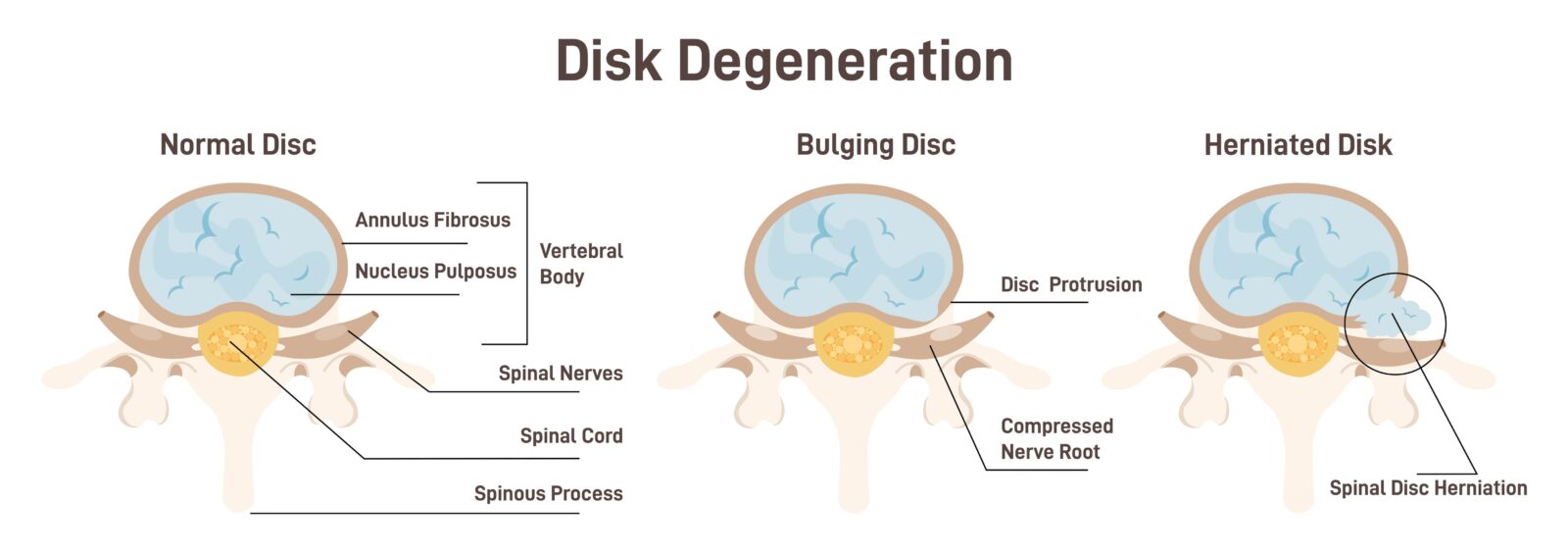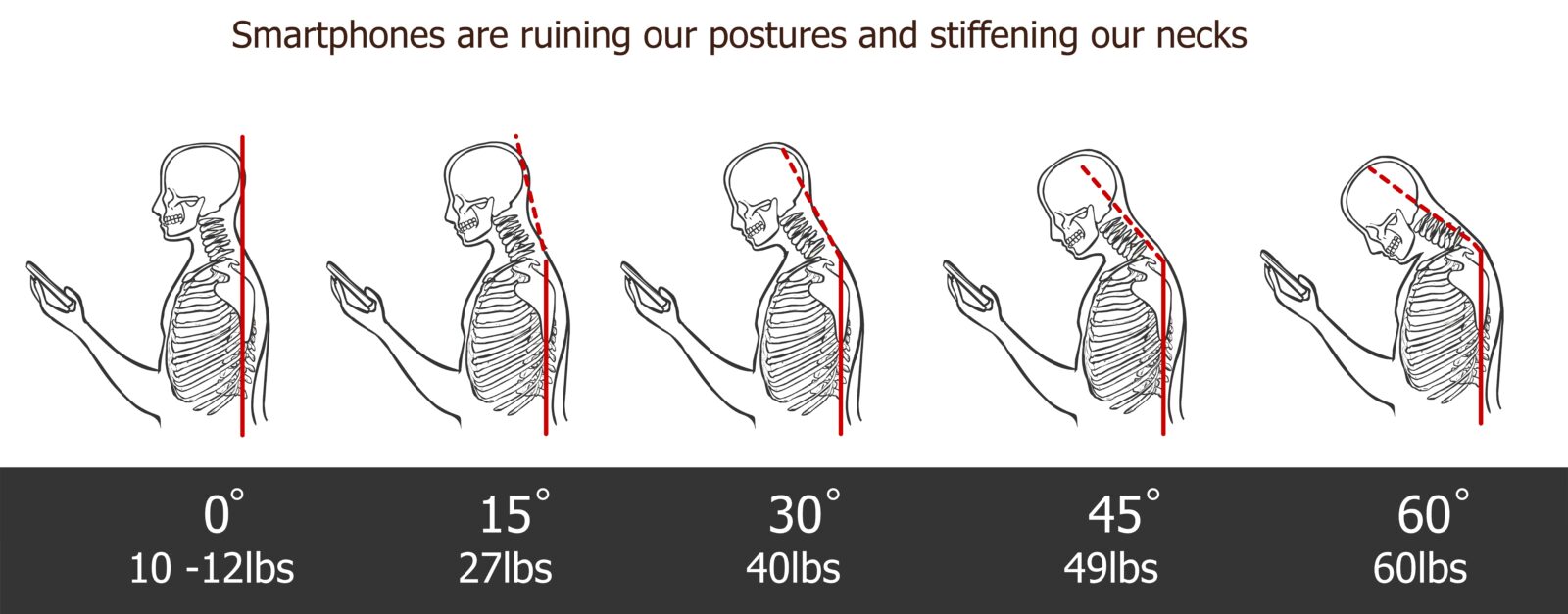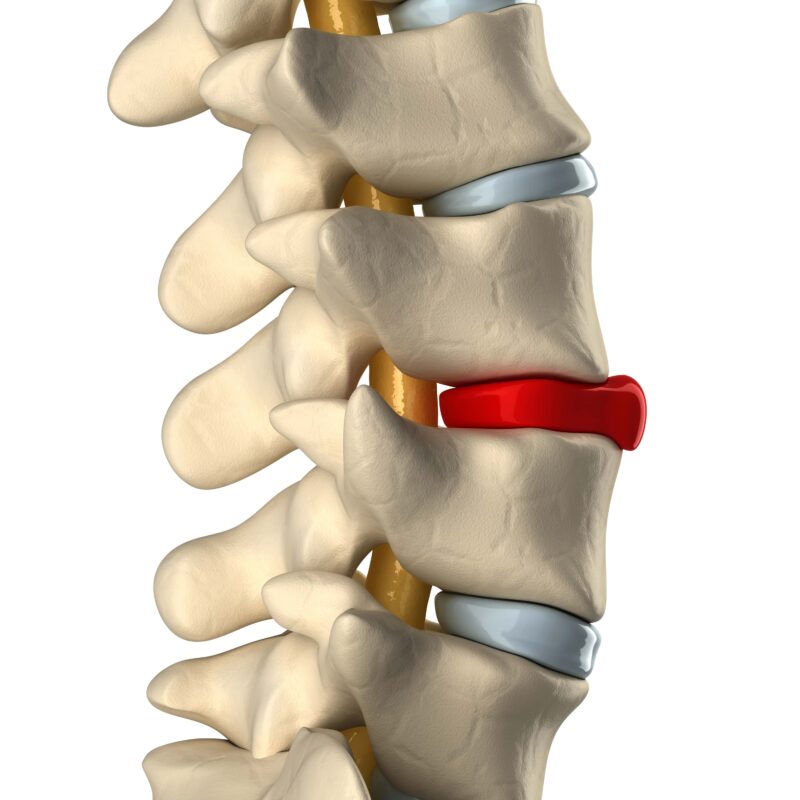Bulging discs are a prevalent spinal condition that affects a significant portion of the adult population, often leading to discomfort and a decrease in quality of life. This condition occurs when one of the spinal discs, which act as cushions between the vertebrae, extends beyond its usual boundary. While they can be asymptomatic, in many cases, they result in pain, numbness, or weakness due to the pressure exerted on adjacent nerves. The causes of bulging discs are multifaceted, ranging from age-related wear and tear to lifestyle factors such as poor posture, repetitive strain from certain activities, and even genetic predisposition. Understanding these various causes is crucial for both prevention and effective management of this spinal issue.
Understanding Bulging Discs
A bulging disc, also known as a protruding disc, is a condition related to the spine where a spinal disc bulges out of its normal boundary. Spinal discs are soft, cushion-like pads situated between the vertebrae (the bones of the spine) and serve as shock absorbers for the spinal column.
In a healthy spine, these discs are neatly tucked between the vertebrae. However, with a bulging disc, the disc extends beyond its usual space, often due to degeneration over time. This bulging is not a rupture or tear in the disc; rather, the disc remains intact, but its outer layer, called the annulus fibrosus, bulges outwards.

Unlike a herniated disc, where a crack in the disc lets some of its softer inner material (the nucleus pulposus) escape, a bulging disc involves the disc stretching and protruding outward without breaking. This bulging can occur anywhere along the spine but is most common in the lumbar (lower back) and cervical (neck) regions.
Bulging discs can lead to discomfort and pain, especially if the bulge puts pressure on the nearby nerves. This pressure can cause symptoms like pain, numbness, tingling, or weakness in the areas served by the affected nerves. The severity and type of symptoms can vary depending on the location and extent of the bulge.
It’s important to note that not all bulging discs cause symptoms; in fact, they are sometimes found incidentally during imaging tests for other conditions. When symptoms do occur, they can often be managed with a combination of physical therapy, medication, and lifestyle modifications, with surgery being a last resort.
Common Causes of Bulging Discs
Age-Related Wear and Tear:
Age-related wear and tear is a primary factor in the development of bulging discs, a condition prevalent as individuals grow older. Over time, our spinal discs, which function as shock absorbers between the vertebrae, undergo a natural degeneration process. This process involves the loss of fluid in the discs, making them less flexible and more susceptible to damage. As these discs become drier and weaker, they can lose their shape and structural integrity, leading to a bulging outwards beyond their normal confines in the spinal column. This age-induced deterioration often results in the outer layer of the disc, known as the annulus fibrosus, stretching or bulging, which can put pressure on the surrounding nerves and spinal cord. While this wear and tear is a normal part of aging, it can lead to symptoms such as back pain, numbness, or weakness, especially if the bulging disc compresses nearby nerve roots. This condition highlights the importance of maintaining spinal health through a balanced diet, regular exercise, and proper posture, particularly as we age.
Poor Posture:

Poor posture is a significant contributor to the development of bulging discs, particularly in our increasingly sedentary modern lifestyle. When we maintain improper posture, especially for prolonged periods, it places uneven pressure and strain on the spine. This can be especially problematic when sitting or standing incorrectly for long durations, a common issue in desk-bound work environments. Over time, this continuous strain can lead to the weakening of the spinal discs, the soft, cushion-like structures between the vertebrae. As these discs weaken, they are more likely to bulge out of their normal space within the spinal column. Poor posture can cause the spine to become misaligned, leading to an uneven distribution of weight and pressure. This imbalance can force the discs to compensate by stretching or protruding towards one side, often resulting in a bulging disc. This condition not only contributes to discomfort and pain but can also lead to more serious spinal issues if left unaddressed. Thus, maintaining good posture is crucial for spinal health and can significantly reduce the risk of developing bulging discs and other related spine conditions.
Repetitive Strain:
Repetitive strain on the spine, often resulting from certain occupational or recreational activities, is a notable cause of bulging discs. Jobs or hobbies that involve consistent and repetitive motions such as lifting, bending, twisting, or even prolonged driving can exert significant stress on the spine. This stress particularly affects the spinal discs, which act as cushions between the vertebrae. Over time, these repetitive actions can lead to the gradual wear and tear of the discs, causing them to weaken. As the discs weaken, they become more susceptible to bulging out of their normal position. The constant strain can cause the outer layer of the disc, known as the annulus fibrosus, to stretch or bulge, which might compress nearby nerve roots or the spinal cord. This pressure can result in symptoms like back pain, numbness, or tingling in the areas served by the affected nerves. Therefore, it’s crucial to practice safe lifting techniques, take regular breaks to reduce strain, and engage in exercises that strengthen the back and core muscles, helping to mitigate the risk of developing a bulging disc due to repetitive strain.
Injury or Trauma:
Injury or trauma to the spine is a significant cause of bulging discs, particularly in cases of sudden, high-impact events like car accidents, falls, or sports injuries. Such traumatic incidents can exert immediate and intense pressure on the spine, leading to damage to the spinal discs. These discs, which serve as shock absorbers between the vertebrae, can be subjected to such force that they stretch or deform, resulting in a bulging disc. This deformation occurs when the tough outer layer of the disc, the annulus fibrosus, is forced to extend beyond its normal boundary within the spinal column. While the disc remains intact, unlike in a herniated disc where the inner material breaks through, the bulge can still put pressure on nearby nerves or the spinal cord, leading to pain, numbness, or weakness. Additionally, repeated minor injuries over time can contribute to this condition, as they cause cumulative stress and gradual weakening of the disc. Understanding the impact of injury and trauma on spinal health is crucial, emphasizing the importance of protective measures during high-risk activities and seeking prompt medical attention following spinal injuries to prevent or address issues like bulging discs.
Lifestyle Factors:
Lifestyle factors play a significant role in the development of bulging discs, a condition influenced by daily habits and choices. Key factors include obesity, physical inactivity, and smoking, each contributing in different ways. Excess body weight, for instance, puts additional stress on the spine, particularly in the lumbar region, leading to an increased likelihood of disc degeneration and bulging. The additional load can cause the discs to lose their shape and bulge out of their normal space. Physical inactivity or a sedentary lifestyle contributes to weaker back and core muscles, which are crucial for supporting the spine. Without this support, the discs are more prone to bulging under even normal loads and stresses. Smoking is another detrimental factor, as it reduces blood flow to the spine, leading to decreased nourishment of spinal tissues and accelerating disc degeneration. Together, these lifestyle factors create a perfect storm for the development of bulging discs, underscoring the importance of maintaining a healthy weight, staying physically active, and avoiding smoking to promote overall spinal health and prevent conditions like bulging discs.
Genetic Factors:
Genetic factors can significantly influence the likelihood of developing a bulging disc, indicating that predisposition to this condition can be inherited. Research has shown that certain genes may affect the composition and durability of spinal discs, making them more susceptible to degeneration and bulging. These genetic traits can determine the quality of the disc material, including its strength, elasticity, and ability to withstand stress and aging. As a result, individuals with a family history of spinal issues, including bulging or herniated discs, may have a higher risk of experiencing similar problems. This genetic predisposition means that, for some, the discs may degenerate faster or be more prone to damage under stress or strain, even without external factors like injury or poor posture. While genetic factors are beyond one’s control, awareness of a familial propensity for spinal issues can encourage proactive measures in spinal health maintenance. This can include regular exercise, maintaining good posture, and seeking early intervention for spinal discomfort, thus mitigating the impact of these inherited tendencies on spinal health.
Prevention and Management
While not all causes of bulging discs can be prevented, especially those related to aging and genetics, certain lifestyle changes can help. Maintaining good posture, engaging in regular exercise, and avoiding repetitive strain can be beneficial. For those already dealing with a bulging disc, physical therapy, pain management strategies, and in some cases, surgery, might be recommended.
Conclusion
Understanding the various causes of bulging discs is key to both prevention and effective management. By being mindful of our daily activities, posture, and overall health, we can reduce the risk of developing this condition and manage its symptoms more effectively if it occurs. Always consult a healthcare professional for diagnosis and tailored treatment options.











 in CA by O360®
in CA by O360®